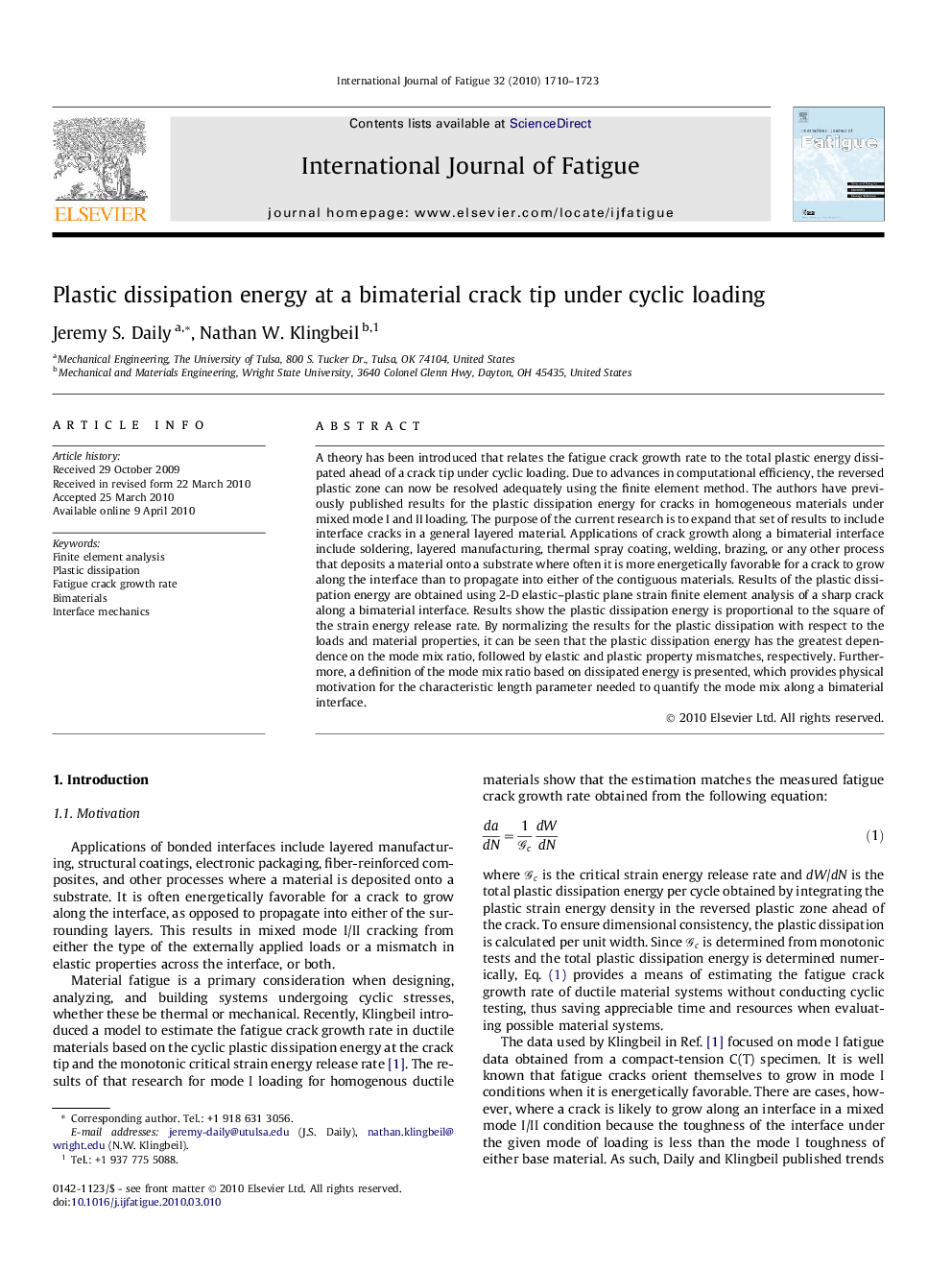| Article ID | Journal | Published Year | Pages | File Type |
|---|---|---|---|---|
| 777040 | International Journal of Fatigue | 2010 | 14 Pages |
A theory has been introduced that relates the fatigue crack growth rate to the total plastic energy dissipated ahead of a crack tip under cyclic loading. Due to advances in computational efficiency, the reversed plastic zone can now be resolved adequately using the finite element method. The authors have previously published results for the plastic dissipation energy for cracks in homogeneous materials under mixed mode I and II loading. The purpose of the current research is to expand that set of results to include interface cracks in a general layered material. Applications of crack growth along a bimaterial interface include soldering, layered manufacturing, thermal spray coating, welding, brazing, or any other process that deposits a material onto a substrate where often it is more energetically favorable for a crack to grow along the interface than to propagate into either of the contiguous materials. Results of the plastic dissipation energy are obtained using 2-D elastic–plastic plane strain finite element analysis of a sharp crack along a bimaterial interface. Results show the plastic dissipation energy is proportional to the square of the strain energy release rate. By normalizing the results for the plastic dissipation with respect to the loads and material properties, it can be seen that the plastic dissipation energy has the greatest dependence on the mode mix ratio, followed by elastic and plastic property mismatches, respectively. Furthermore, a definition of the mode mix ratio based on dissipated energy is presented, which provides physical motivation for the characteristic length parameter needed to quantify the mode mix along a bimaterial interface.
